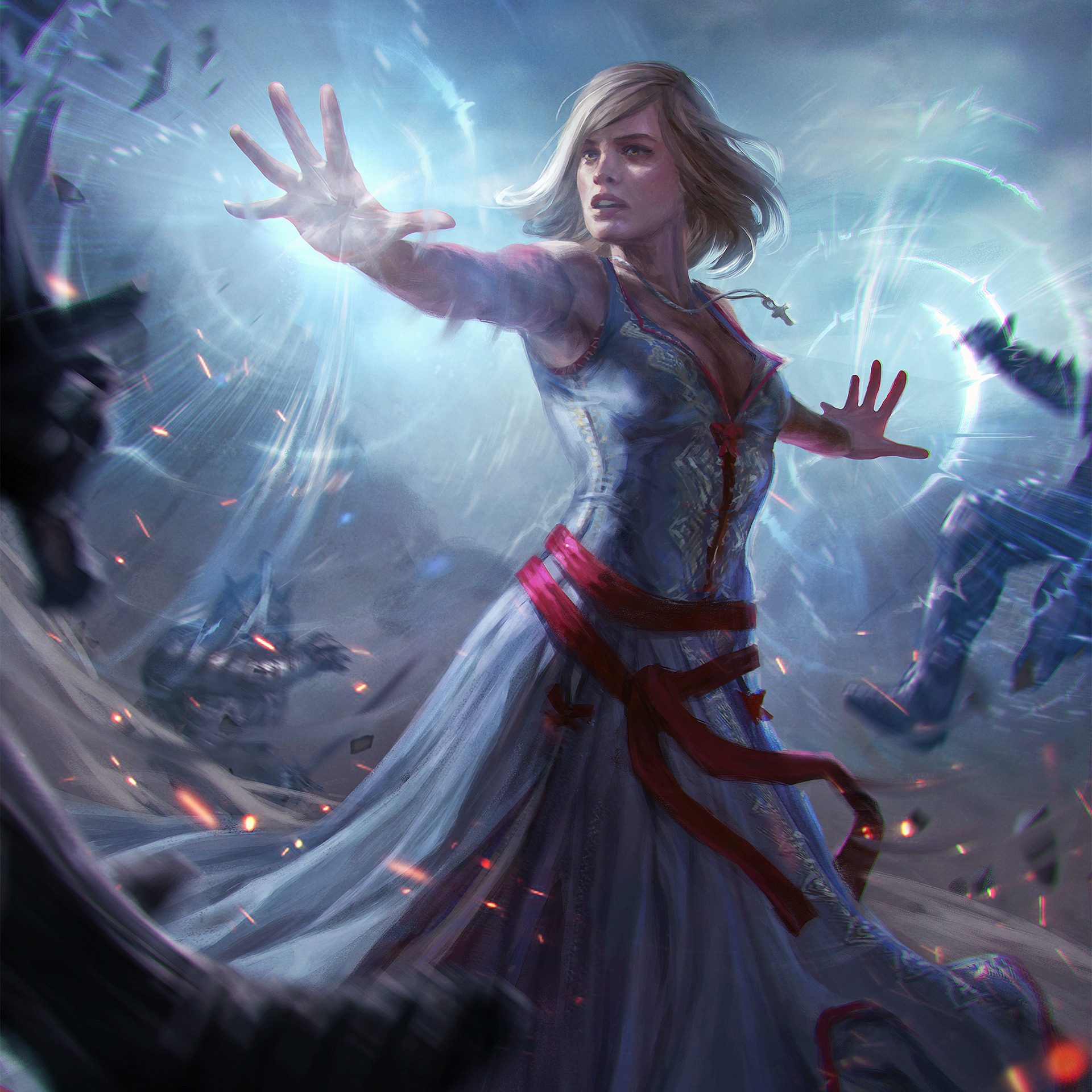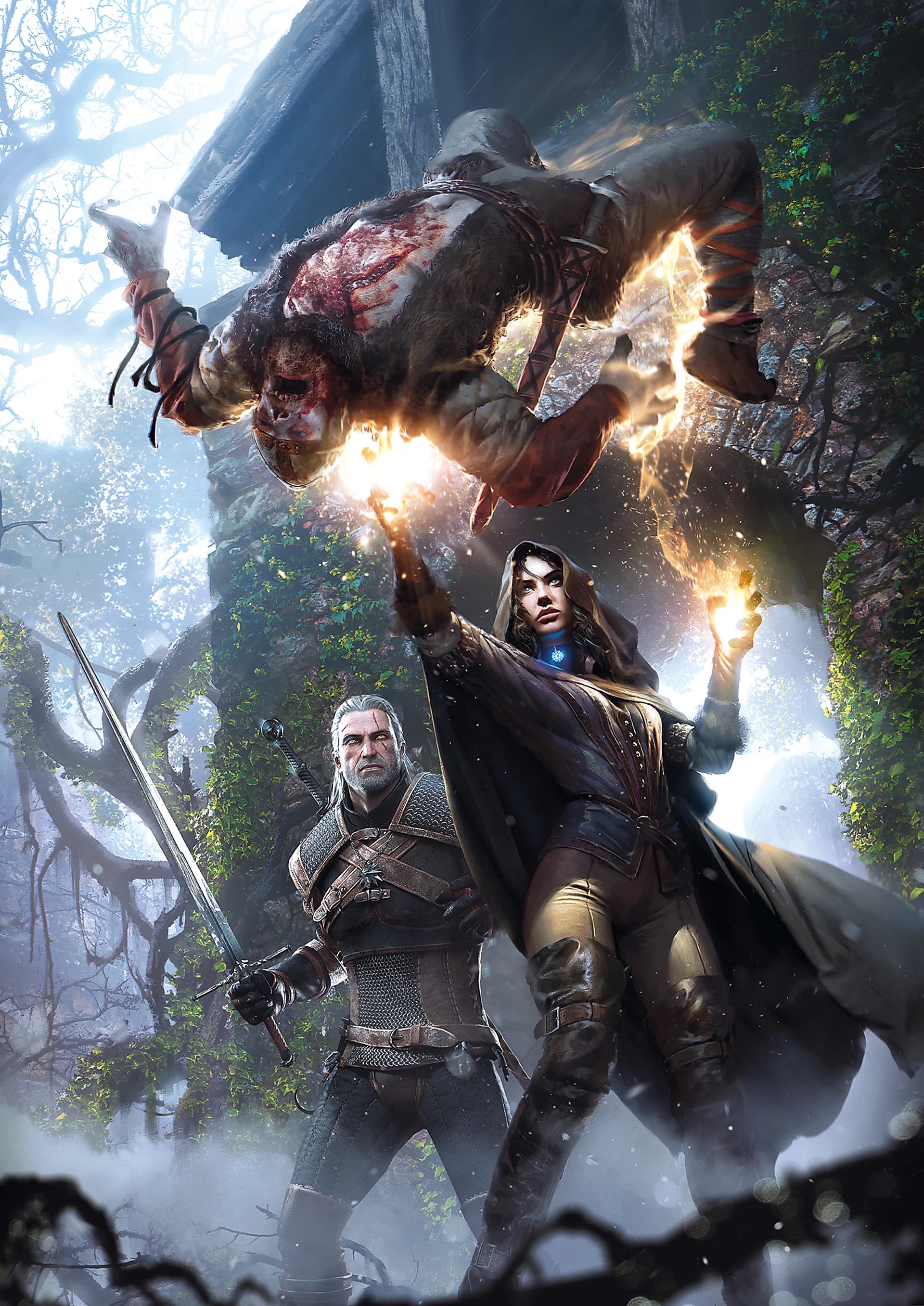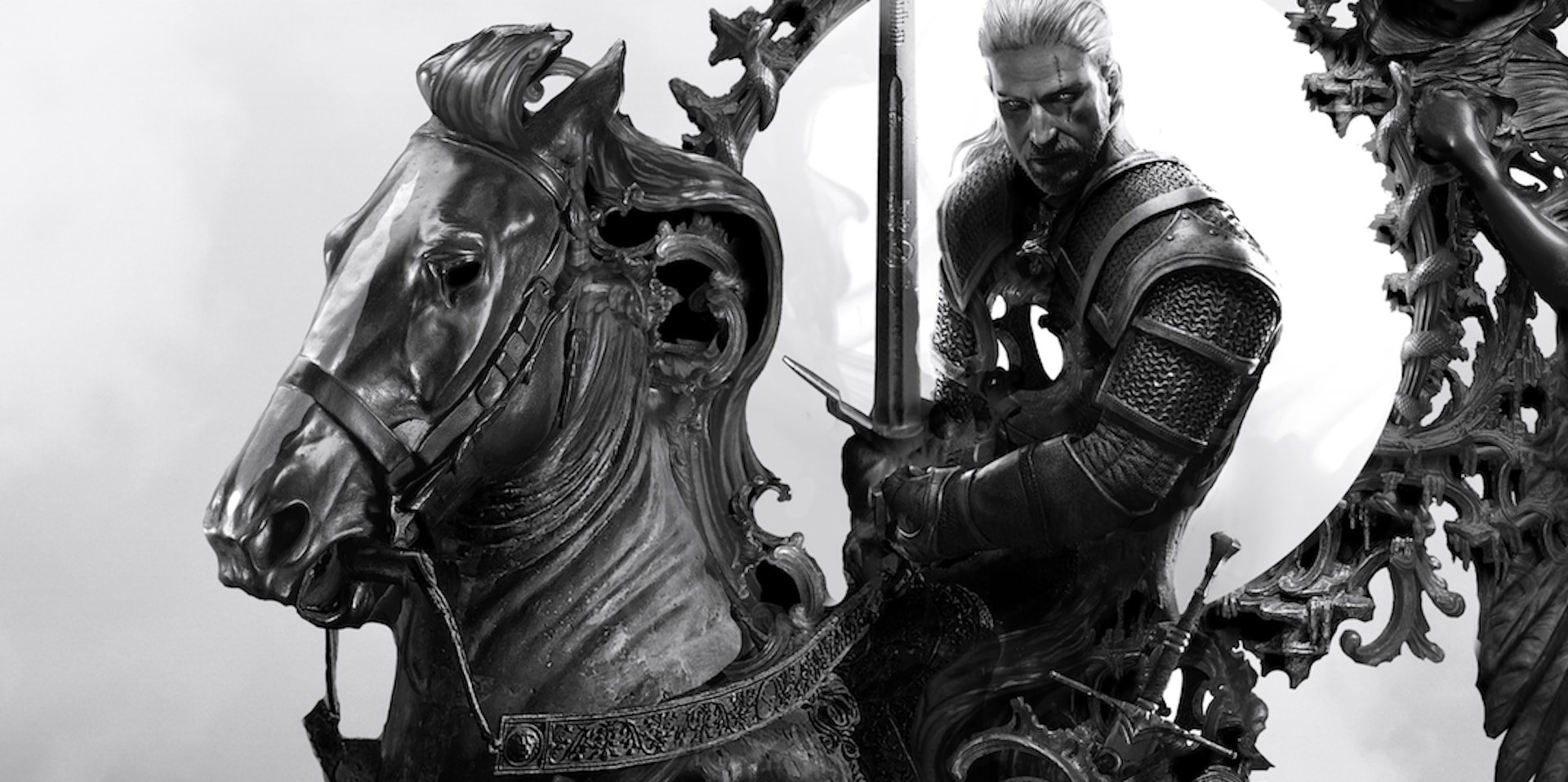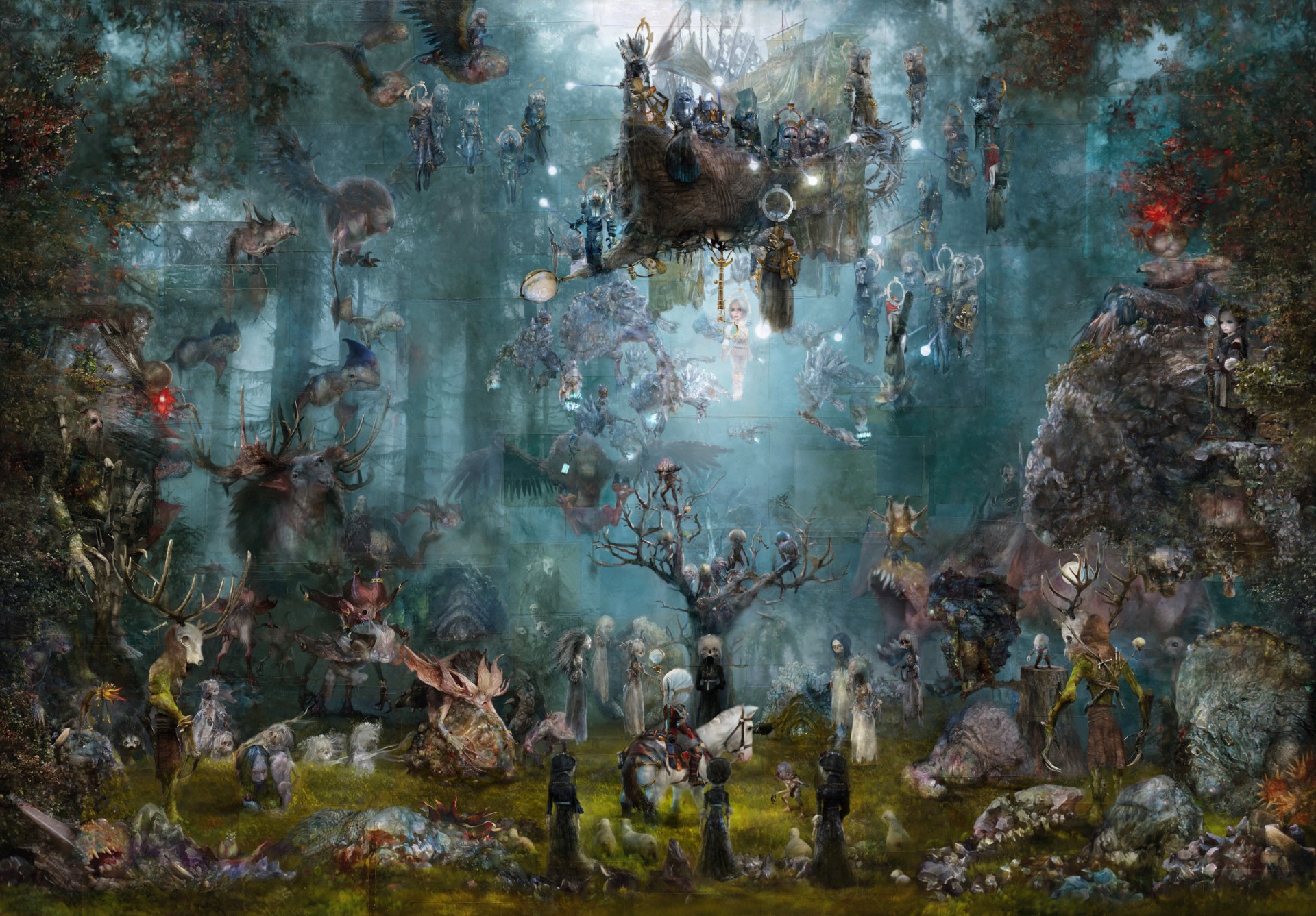CD Projekt RED, the studio that made The Witcher video games, had an intriguing assignment: to visualize the spectacular Witcher fantasy world as imagined by writer Andrzej Sapkowski. How did they translate his epic tale from the book pages to a computer screen?

article
The art of The Witcher 3: Wild Hunt
The art of The Witcher 3: Wild Hunt builds on ancient foundations.
Arjan Terpstra
12 Aug 2022 ⋅ 4 min read
CD Projekt RED, the studio that made The Witcher video games, had an intriguing assignment: to visualize the spectacular Witcher fantasy world as imagined by writer Andrzej Sapkowski. How did they translate his epic tale from the book pages to a computer screen?
Geralt and Yennefer fight a foe. Available as art print from our web store. See this page for details on size, pricing, and finishes.
Origins
To understand the power of Sapkowski's Witcher stories, we have to look at its origins. Sapkowski used the same base ingredient as other fantasy writers: the historic romanticism of the nineteenth Century.
This gave us Sir Walter Scott's Ivanhoe, but also The Lord of the Rings and Game of Thrones in later Centuries. They're epic tales of noble knights and damsels in distress, with the occasional mage or druid thrown in for good measure.
Romanticist artists in the 19th Century were enthralled by the Middle ages, that seemingly supported their Victorian morals and ethics more than modern times did. It led to much rose-tinted painting, like this one by Frank William Warwick Topham showing Ivanhoe bowing to the queen before a jousting duel.
His world is a ravaged world, full of looming peril. Death is never far away, especially with the Wild Hunt present: a band of specters roaming around on undead horses. The only ones able to challenge this Wild Hunt are the story's heroes: the Witcher Geralt of Rivia, a monster slayer for hire, and his mage friends Yennefer of Vengerberg, Ciri, and Triss.
Darkness
Sapkowski may have penned an epic series of Witcher books, but how would they transfer to a game? How would the artists at CD Projekt Red strike the right balance between story and gameplay, and decide on how "dark" dark would be?
This is where concept art comes in. Concept artists visualize what a game's development team needs to know to build a game, and are pivotal to finding a game's aesthetic.
To do so, these artists looked at the sources that inspired Sapkowski.
Geralt meets a foe in the woods. Concept art made by Mark Madej for The Witcher 3. Available as art print from this website. Follow the link for details.
The in-game Novigrad is a purely fictional place, but the name meant the concept artists could leverage many attributes of historic towns that thrived in countries like Croatia, Hungary, or Poland.
Telling details are in the architecture: the half-timbered houses are typical of late-Medieval buildings in Germanic and Slavic countries, a construction popular in places where timber comes cheap, as was the case in the densely forested regions of Eastern Europe.
Eastern European aesthetic
Sapkowski also leaned much more on folklore than his fellow fantasy writers, especially German and Slavic folklore. In doing so, he introduced menaces like the Rusalka, Striga, and Vodyanoi to his readers.
This made for easy research for the concept artists: as many artists were themselves of Polish origins, they would have imagined the shape of specific monsters from their bedtime stories.
There's the Nekkers for instance, small scavengers who hunt travelers in groups, and the Crones, three witches who collect people's ears to help them "listen to the woods." There's the Rusalki, water nymphs not unlike sirens and mermaids in appearance and behavior, and the Vodyanoi, fish people who board your ship when you least expect it.
Water Hags, Nekkers en Drowners are common monsters in The Witcher 3: Wild Hunt’s world. Image available as fine art print though here.
Tribute art
Take this tribute artwork by the artist Nekro, called "Linked by Destiny," who reimagined Geralt of Rivia in digital art reminiscent of late-Gothic, wooden statues.
Linked By Destiny by Nekro, detail. Please see the product page for availability and pricing.
No Gods Nor Masters, a The Witcher-inspired work by Chris Berens. The art is available as part of our Witcher commissioned works collection.







